68+ Sample Vendor Agreement Templates
-
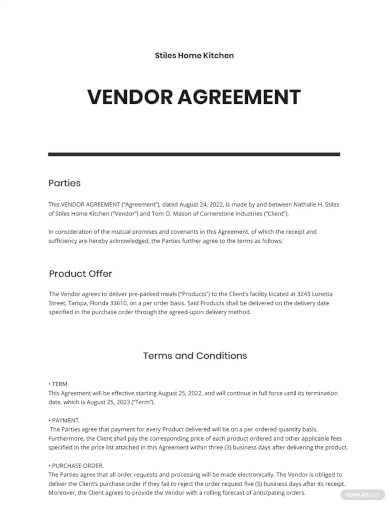
Vendor Agreement Template
download now -
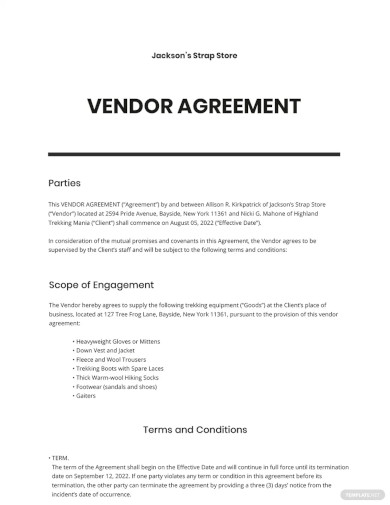
Simple Vendor Agreement Template
download now -
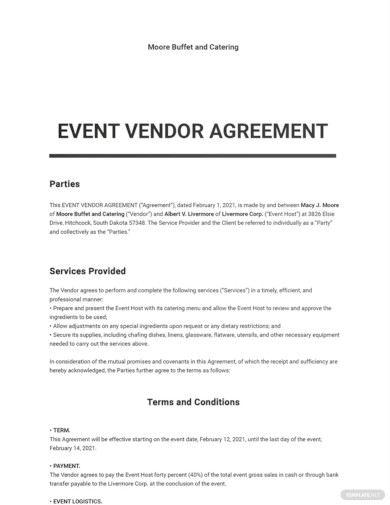
Event Vendor Agreement Template
download now -
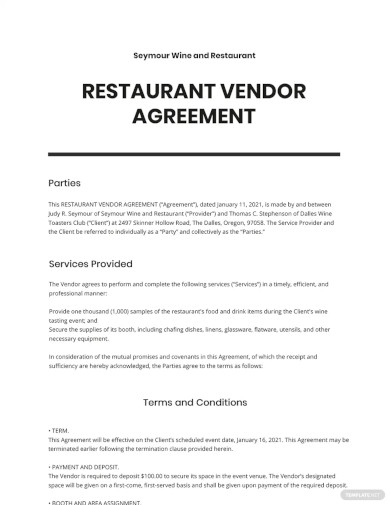
Restaurant Vendor Agreement Template
download now -
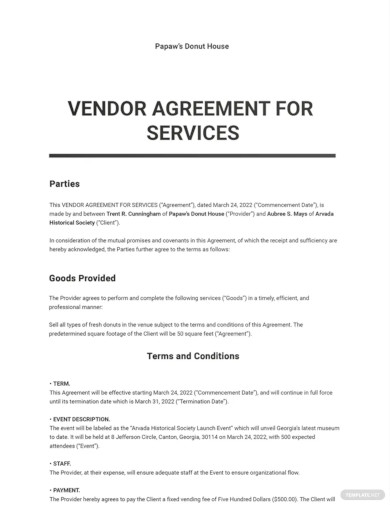
Vendor Agreement for Services Template
download now -
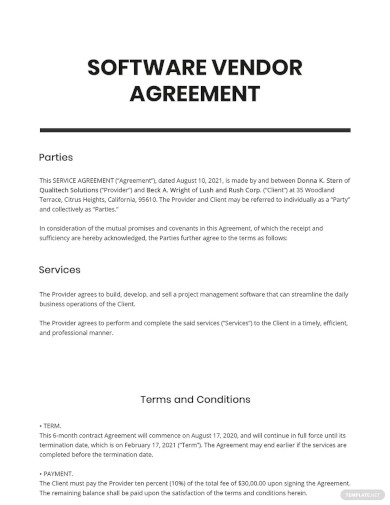
Software Vendor Agreement Template
download now -
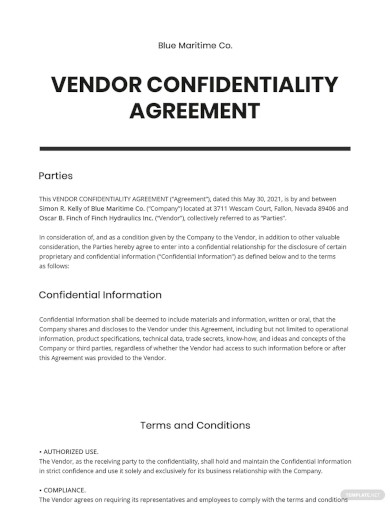
Vendor Confidentiality Agreement Template
download now -
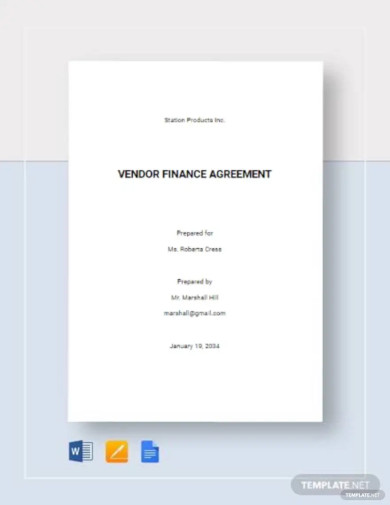
Vendor Finance Agreement Template
download now -
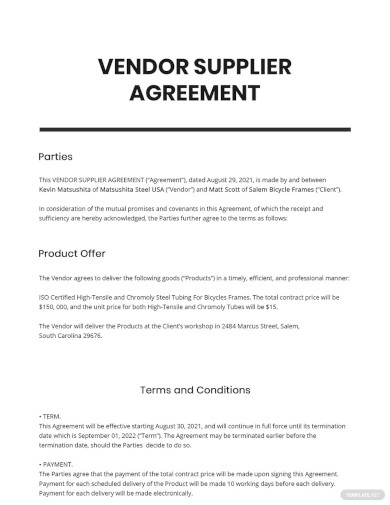
Vendor Supplier Agreement Template
download now -
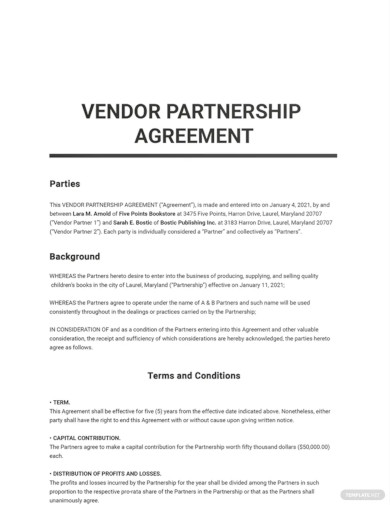
Vendor Partnership Agreement Template
download now -
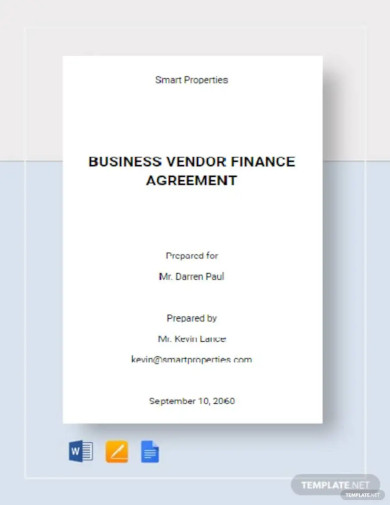
Business Vendor Finance Agreement Template
download now -
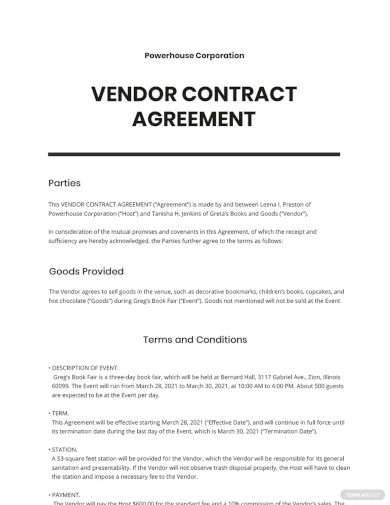
Vendor Contract Agreement Template
download now -
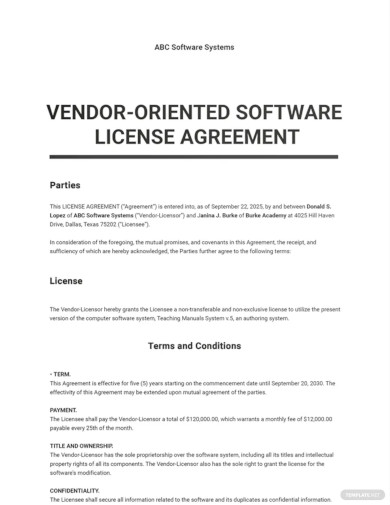
Vendor-Oriented Software License Agreement Template
download now -
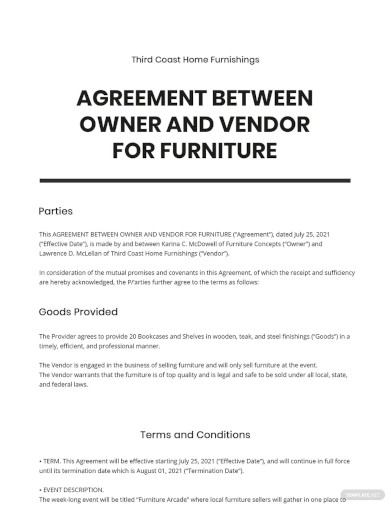
Agreement Between Owner and Vendor for Furniture Template
download now -

Vendor Non Compete Agreement Template
download now -

Sample Vendor Agreement Template
download now -

General Vendor Agreement Template
download now -
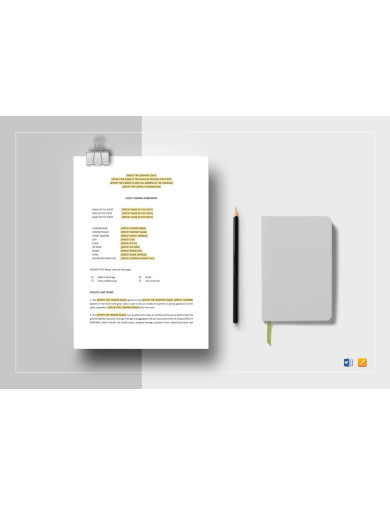
Sample Event Vendor Agreement Template
download now -
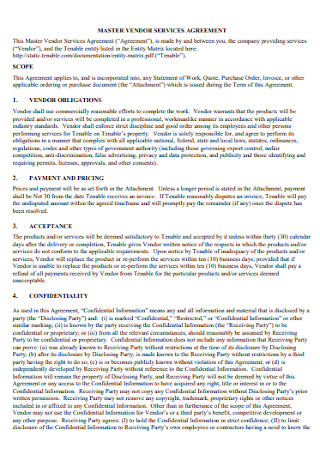
Master Document Vendor Service Agreement
download now -
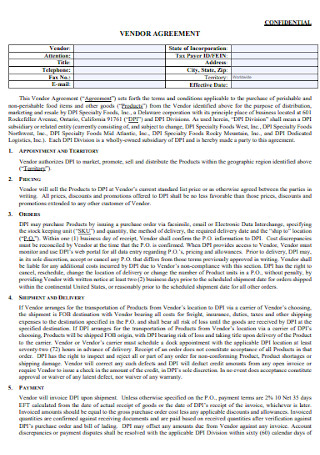
Confidential Vendor Supply Agreement
download now -
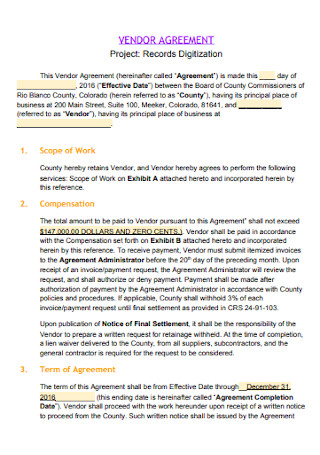
Project Construction Vendor Agreement
download now -
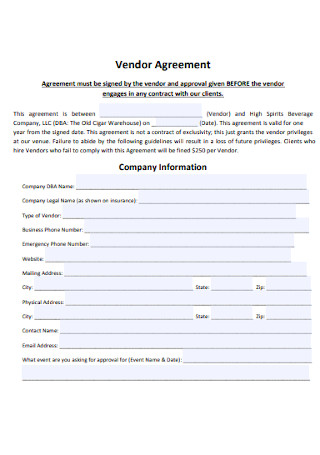
Event Client Vendor Agreement
download now -
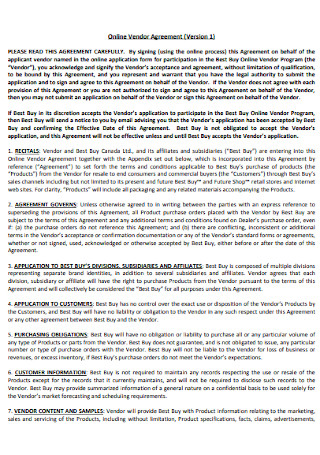
Online Business Vendor Agreement
download now -
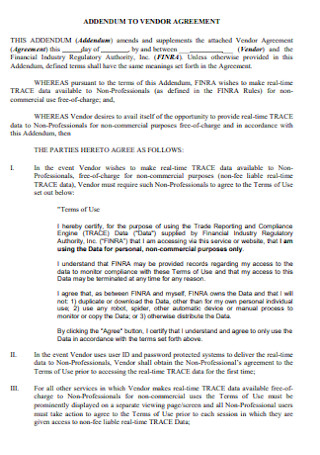
Addendum to Vendor Registration Agreement
download now -
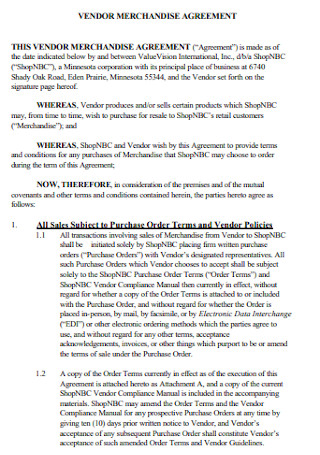
Draft Vendor Merchandise Agreement
download now -
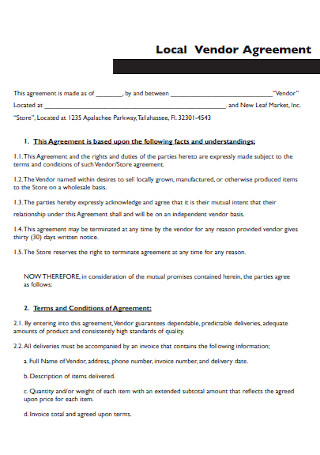
Blank Local Vendor Agreement
download now -
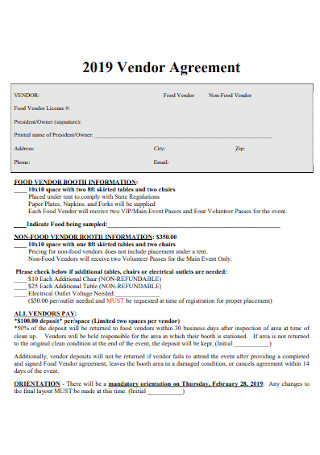
Sample Ecommerce Vendor Agreement Template
download now -
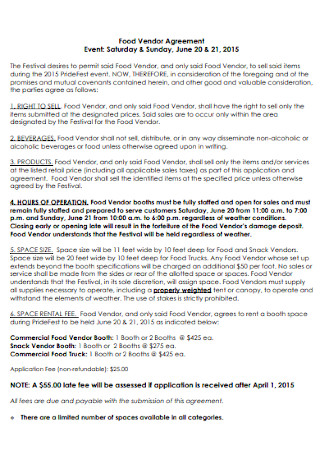
Standard Food Vendor Agreement
download now -
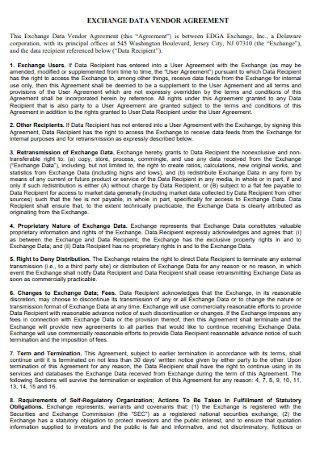
Exchange Data Vendor Application Agreement
download now -
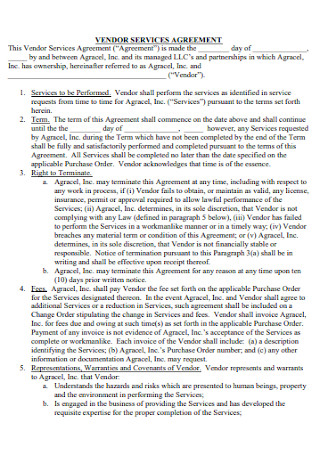
Sample Vendor Consignment Service Agreement
download now -
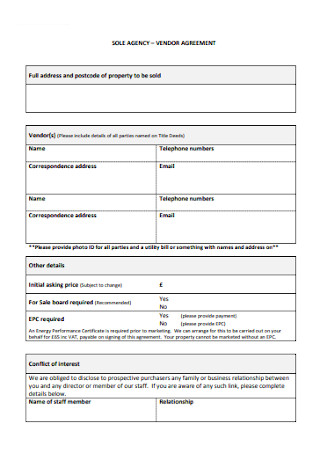
Vendor Rate Contract Agency Agreement
download now -
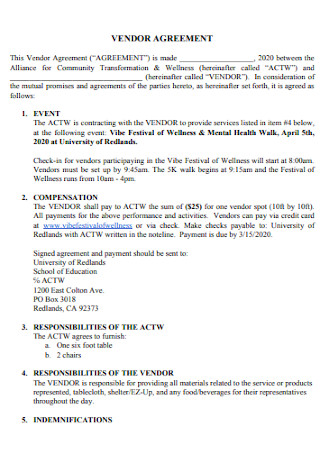
Health Wedding Vendor Agreement
download now -

University Restaurant Vendor Agreement
download now -
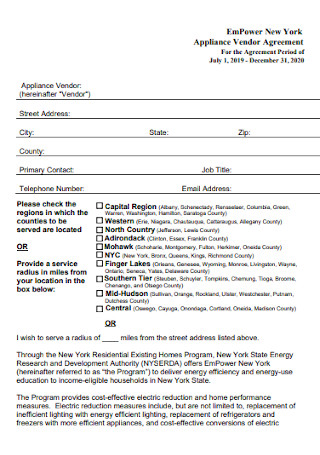
Appliance Vehicle Vendor Agreement
download now -
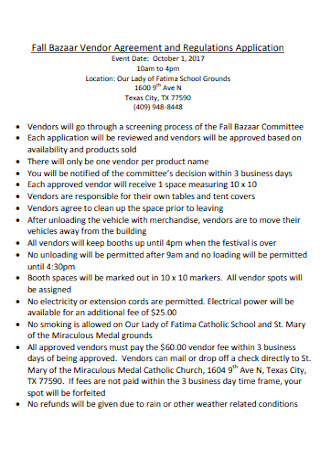
Fall Bazaar Vendor Agreement
download now -
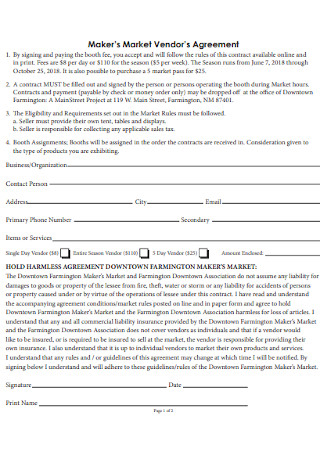
Market Vendors Agreement
download now -
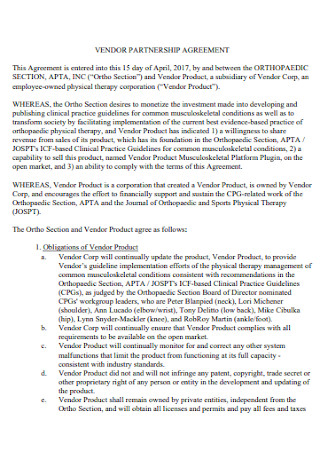
Vendor Partnership Agreement
download now -
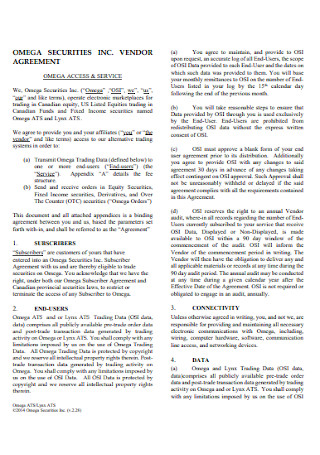
Vendor Security Agreement
download now -
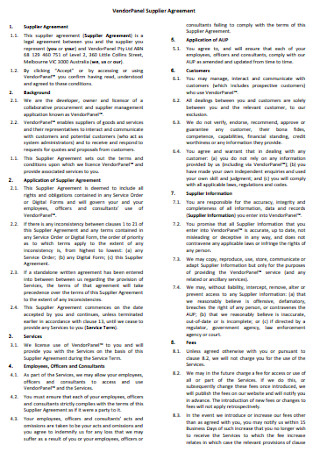
Vendor Panel Supplier Agreement
download now -
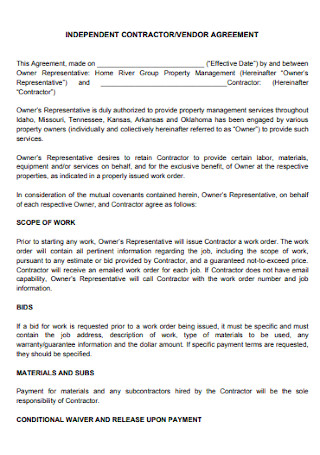
Independent Contractor and Vendor Agreement
download now -
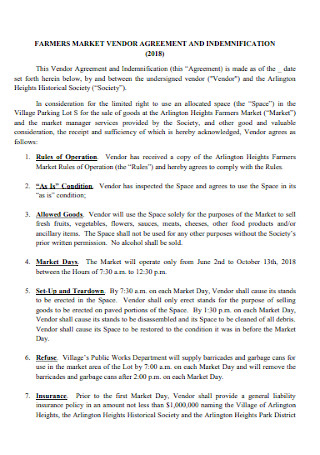
Farmers Market Vendor Agreement
download now -

Simple Vendor Agreement Template
download now -
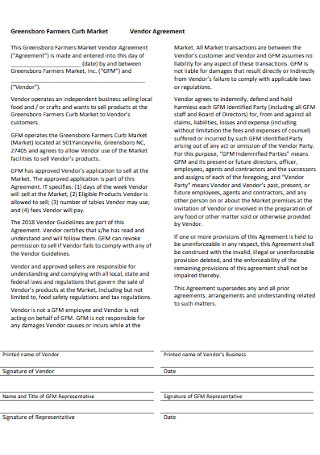
Market Vendor Agreement
download now -
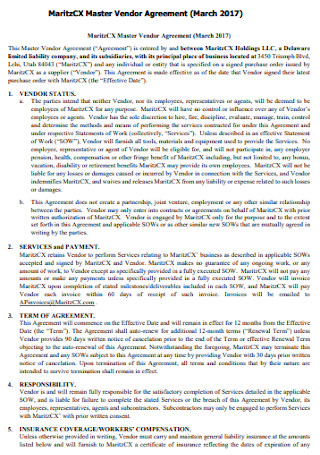
Master Vendor Agreement
download now -
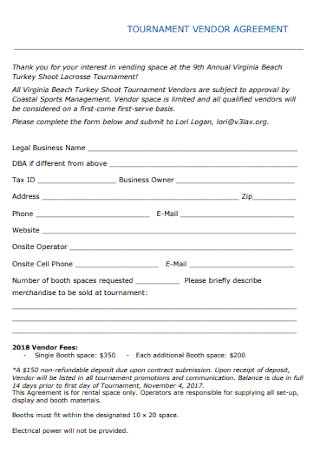
Tournament Vendor Agreement
download now -
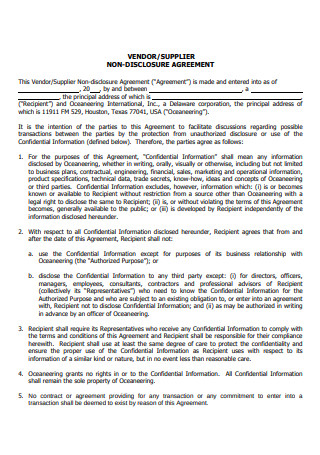
Vendor Supplier Non Disclosure Agreement
download now -

Vendor Hold Harmless Agreement
download now -
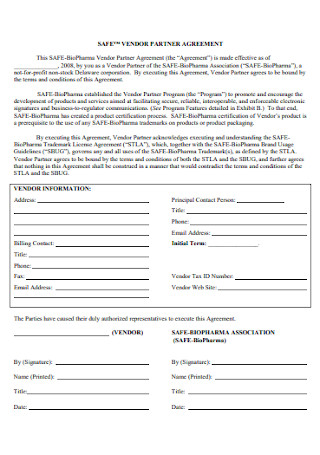
Safe Vendor Agreement
download now -
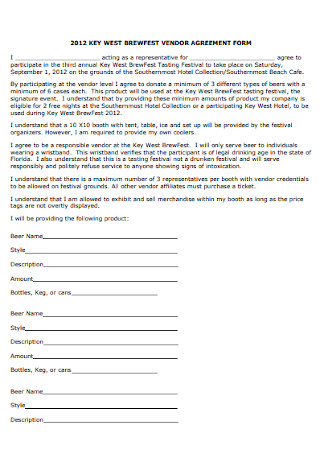
Vendor Agreement Form
download now -
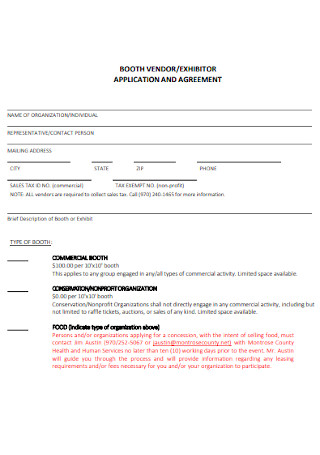
Booth Vendor Agreement
download now -
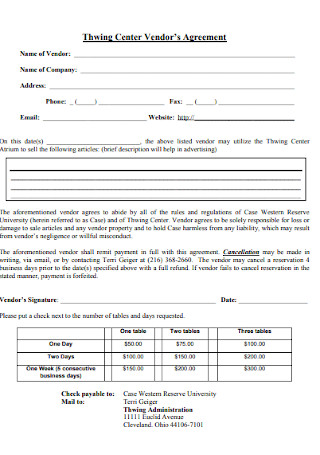
Thwing Center Vendors Agreement
download now -
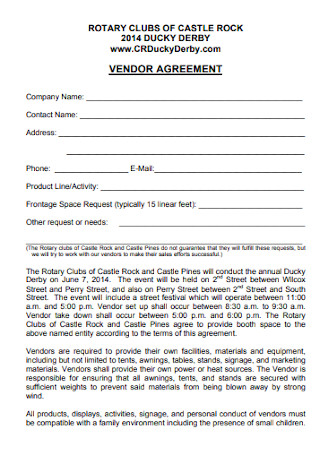
Formal Vendor Agreement Template
download now -
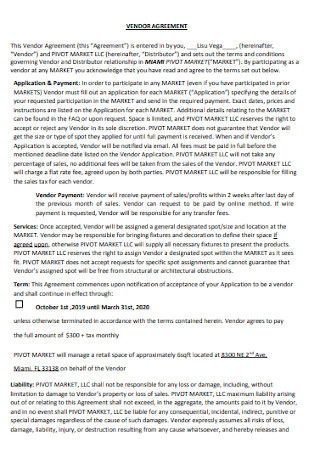
Vendor Agreement Format
download now -
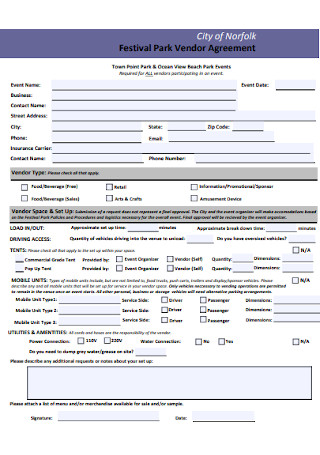
Festival Park Vendor Agreement
download now -
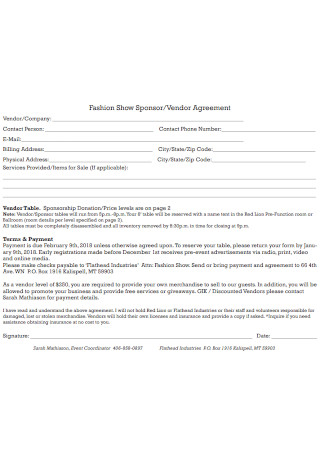
Fashion Show Sponsor Vendor Agreement
download now -
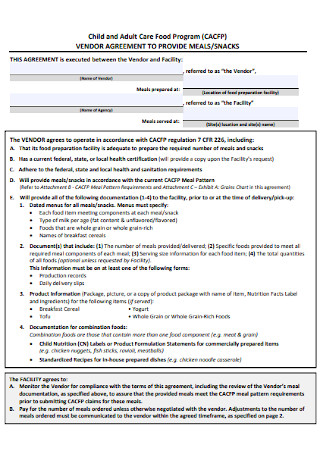
Vendor Agreement to Provide Meals
download now -
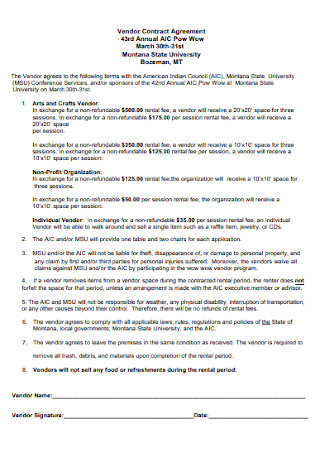
Vendor Contract Agreement
download now -
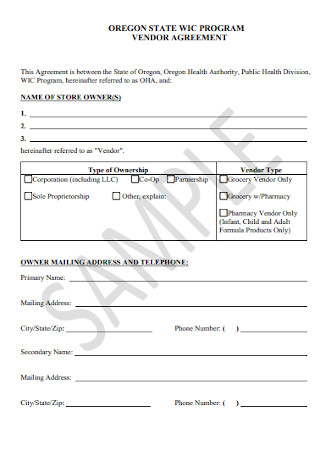
Program Vendor Agreement
download now -
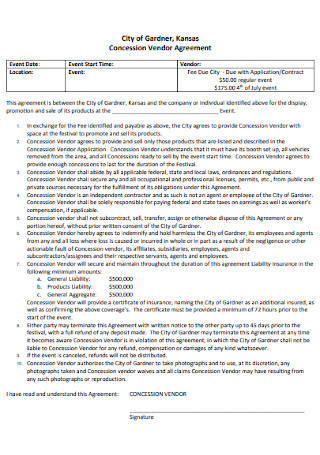
Concession Vendor Agreement
download now -
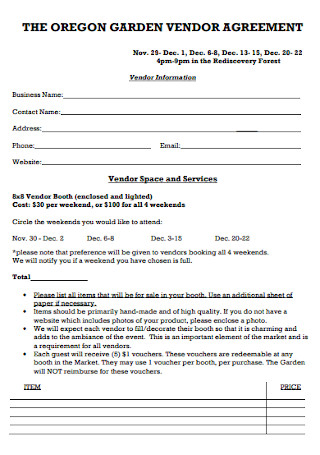
Garden Vendor Agreement
download now -
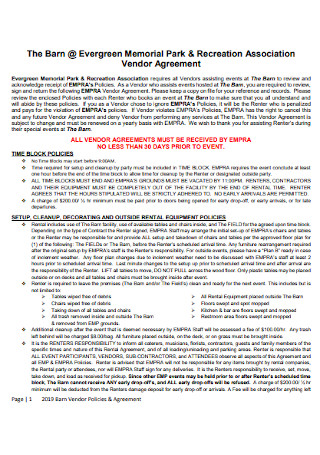
Recreation Association Vendor Agreement
download now -
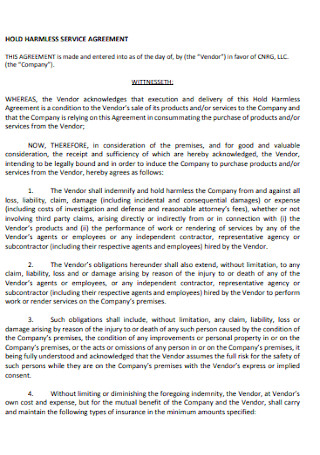
Special Order Vendor Agreement
download now -
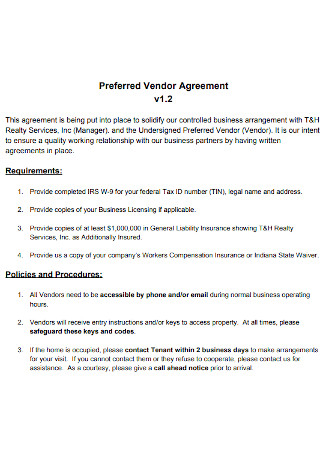
Preferred Vendor Agreement
download now -
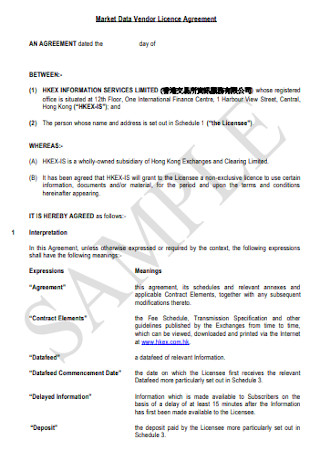
Market Data Vendor Licence Agreement
download now -
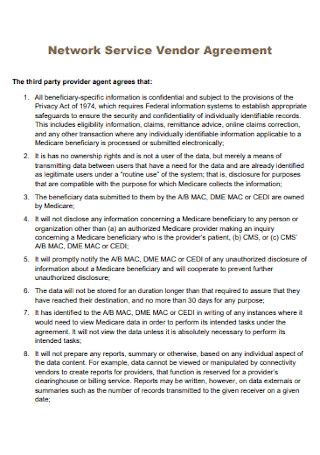
Network Service Vendor Agreement
download now -
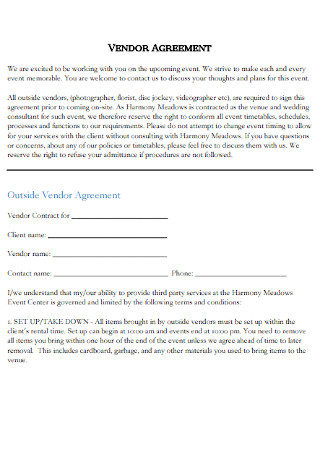
Printable Vendor Agreement Template
download now -
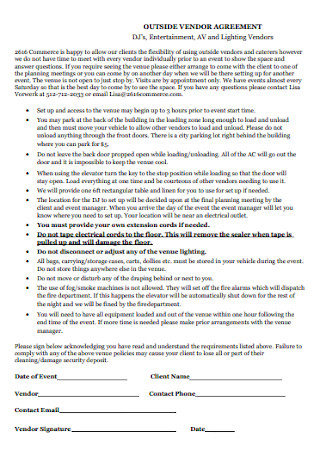
Outside Vendor Agrement
download now -
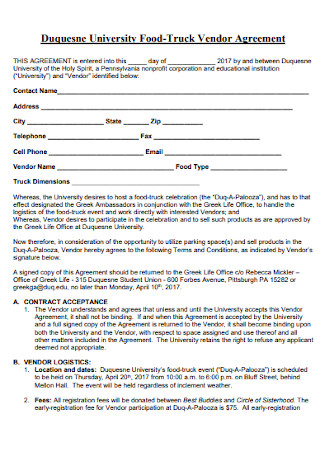
Food Truck Vendor Agreement
download now -
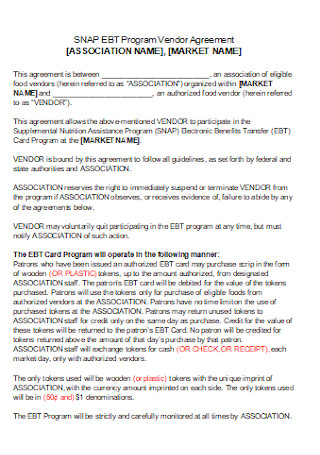
Basic Program Vendor Agreement
download now
What Is a Vendor Agreement?
First things first, a vendor refers to any business or simply a person who is obliged to supply any product or service to a particular company. This vendor, also called a supplier, must carry out the terms given by the client or business. And how can both parties come up with an official deal? They write the terms and conditions under a vendor contract or agreement. Thus, the vendor agreement, usually in a standard agreement form or letter format, covers the details of who supplies and receives exclusive goods and services in a deal. And most importantly, the document contains the terms, rules, and content that must be followed by parties.
A report confirmed that Total consists of around 150,000 suppliers, Walmart has approximately 100,000, and Proctor and Gamble has over 75,000.
According to Statista, the US had over 2,072 manufacturing businesses in 2015.
Vendor Agreement: Why Is It Important?
In business, vendor agreements are crucial because, just like most agreements, they outline the basic details about the products and services provided, as well as the terms or conditions. So, the agreement And contract clarifies any negotiation between parties. And lesser chances of conflicts occur since every party will be aware of the objectives and how to manage risks. More so, the document serves as evidence if there are factors to clarify regarding the agreement because the significant info is written.
Furthermore, vendor agreements work in different fields. You can rely on its document to deal with office supplies, exclusive services, consultations, event planning, marketing strategies, and a lot more. And one of the most common applications of vendors is in the manufacturing industry. In America, for example, there were about 2,072 manufacturing establishments in 2015. With many businesses that rely on vendors, the process can be risky. Thankfully, the vendor agreement helps monitor vendors, especially in a large supply base.
What Are the Provisions of a Vendor Agreement?
What makes the vendor agreement reliable is its stipulation of provisions and terms. So, your next document must also contain the essential segments that make an agreement valid. Also, you can prepare a checklist to start deciding which of these provisions will you add to your agreement. And without further ado, here are the common provisions of a vendor agreement:
How to Make a Basic Vendor Agreement
You might ask, “How should I create a decent vendor agreement?” Fret no more because it is not that difficult. Allow a step-by-step guide to help you tailor the agreement’s content, provisions, format, and so forth. In this section, we will discuss to you the easy steps on how to make a standard vendor agreement:
Step 1: Open with an Introductory Statement
Your agreement should begin with the introductory statement. Immediately giving the provisions and terms is informal because whoever reads the agreement form should know about the basic details first. So for your introduction, discuss what the agreement is. Ensure that you stated the label “vendor agreement” here. Next, recognize each party by stating the legal name or business name of the vendor and the client.
Step 2: Insert the Relevant Provisions
Can you still recall every vendor agreement provision discussed before? Slowly insert those elements in your agreement template. Those factors will shape your document to be identified as a vendor agreement. However, don’t just add every example if some provisions are unnecessary. Maybe warranty and intellectual property are irrelevant to your application. Remember that each vendor agreement differs since it depends on what parties agree with. Instead, insert only the relevant components to the sheet.
Step 3: Arrange the Content
Did you finish inserting those vendor agreement provisions? Great. Your next focus is to arrange all information accordingly. Binding agreements come in clauses or groups anyway. Hence, each clause should contain its relevant details only. An example is a termination clause. Don’t write the insurance terms or scope of services under that termination clause since they have a specific group for that.
Step 4: Be Specific
Review your words and sentences carefully if they are straight to the point. The problem with other agreements is when sentences are difficult to understand and quite wordy. Be direct instead. You would not want whoever is expected to sign the form to be confused about the details inside anyway. For example, you might have said, “To provide supplies every end of the month.” What supplies are you talking about? Office equipment, dairy products, or perhaps, loads of apparel? Therefore, being specific is vital.
Step 5: End with the Signature Lines
What completes an agreement form? Signatures. Although signatures are not always required, adding them to the document is still better. By having parties sign, those marks will acknowledge that such people understood and will promise to abide by these terms at all times. So if you are already confident that every detail inside the vendor agreement sheet is understandable and informative enough, then submit it to be signed.
FAQs
What are the types of vendors?
The types of suppliers or vendors differ according to their corresponding duties in supplying particular products and services. And the four major types consist of the following:
- Maintenance or service providers who perform specific services
- Wholesalers who sell products to other businesses
- Retailers who sell goods to individuals customers
- Manufacturers who create products out of raw materials
How many vendors do you need?
The answer depends on you. But don’t decide randomly. Think of your business if it can manage to deal with various vendors. And does your company have the budget for it too? Make strategic plans first and decide if having many vendors will be feasible and profitable for your company.
Is registration required from a vendor agreement?
No, registration is unnecessary because signing the agreement sheet already works.
South African software engineer Theo de Raadt inspired us with the quote, “The primary goal of a vendor is to make money.” Indeed, and that quote proves why a lot of companies engage with a thousand suppliers. However, making money is only a fragment of what you see from successful businesses and vendors. The big picture often happens behind the scenes, like in seeing how vendors and clients work well together. So if you want to grow your company, manage your relationship with your suppliers, starting with a well-thought-out vendor agreement.
